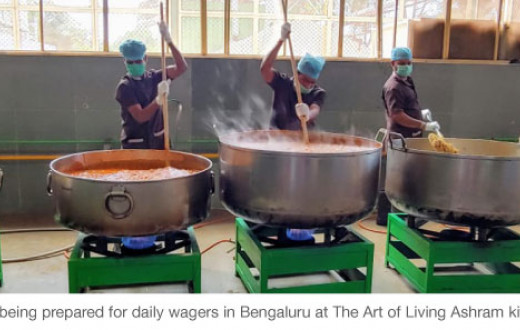Gathering relief after Mount Merapi volcano
In the aftermath of Indonesia’s volcanic catastrophe, the country gradually began on its road to recovery. Mount Merapi or the Mountain of Fire, which erupted five times since October 26, 2010, left in its wake, chaos, death, a ruptured economy, non-existent agriculture, and many people missing and homeless.
On November 2, 2010, five days after the deadly eruption, The Art of Living Indonesian chapter sent aid in the form of blankets, sarongs, milk, medicine, masks, and toiletries. Volunteers visited a few shelter homes, camps and a village at the base of the mountain.
Followed by yet another eruption on November 11, thousands of inhabitants were relocated to temporary shelters near the central Java city of Yogyakarta (famous for the Borobudur temple, and hub of higher education).
Evacuees feeling protected - Heading change
A team of volunteers from Jakarta visited the evacuees on November 22nd. It was found that although their basic needs had been met, they were living in cramped, unhygienic conditions and much remained to be done. Houses in the radius of six miles were covered with thick layers of volcanic ash. Cleaning operations that included uncovering dead bodies and animal carcasses from the rubble as well as clearing great volumes of ash and debris were initiated.
The displaced expressed their wish to return to their villages on the slopes but were fearful of another eruption as Mount Merapi continued to spew hot ash. The whole city was covered with thick ash, and it took several weeks just to clear the dust and thin rocks. Despite wearing masks, people felt congested and had difficulty breathing.
While children played in the camps, the elderly looked on, anxious and worried. The crop of maize, rice, and cassava was destroyed entirely. Their other source of income, tourism to the Borobudur temple, was halted. However, with basic needs being taken care of and volunteers visiting all the camps for any kind of help, this gave the disaster relief victims a sense of protection.















